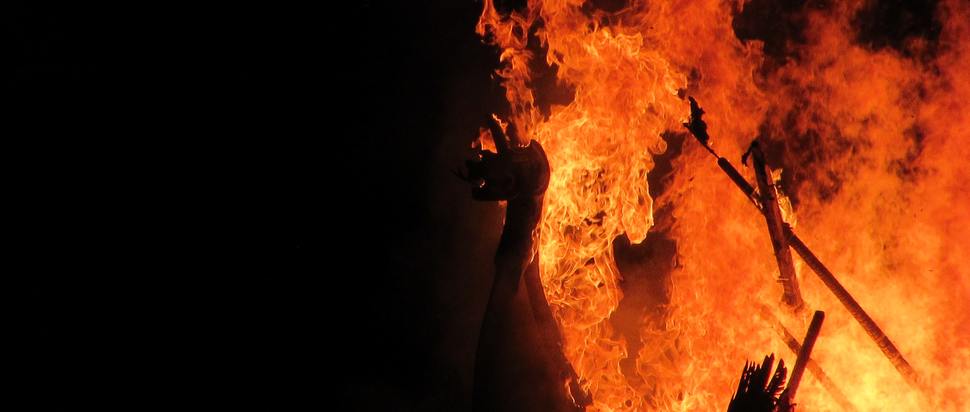The Whole Hog: Scottish midwinter traditions
Take a journey through Scotland's many wonderful midwinter traditions, from Christmas tree bonfires to Up Helly Aa
When you’ve spent every winter of your sorry life in Scotland, it’s easy to forget that some of the customs we take for granted might seem strange to outsiders – Auld Lang Syne may have spread like a weird circular rash, but throwing ourselves into the North Sea on 1 January en masse might still raise an eyebrow or two (granted, fewer than pre-wild swimming fad). It also might be considered rude, concerning even, to burst into someone’s house at quarter past midnight clutching a lump of coal and a bottle of whisky (half-drunk, bottle and guest).
Different areas have been exposed to different influences over time but there are certain core tenets all our traditions share. For example, midwinter in Scotland is cold and dark, so 90 per cent of these events involve a terrifying amount of fire (Burghead’s Burning of the Clavie, the Comrie Flambeux, and the Stonehaven Fireballs to name but a few). Portobello’s Christmas tree beach bonfire makes perfect sense (you’re shivering, we have kindling, let’s get cooking), as does the annual Biggar bonfire (bigger than what? Bigger than the Portobello bonfire).
In north-western Fife sits the town of Newburgh, home to one of the last remaining Caledonian Oddfellows Lodges. The Newburgh Caledonian Lodge of Oddfellows (NCLO) was formed in the early 1800s as a 'friendly society' – they raise money for local causes, usually charities specialising in support for the elderly. Every 31 December, the Oddfellows gather in Newburgh High Street, dressed up in the most frightening costumes imaginable, and are led in a procession (torchlit, of course) by the youngest oddfellow, who rides backwards on horseback, wearing a white double-sided mask.
Orkney’s midwinter celebrations are notable for their absence of fire, among other things. The ba’ is a game of 'mob football' played twice a year (on Christmas Day and New Year’s Day) in Kirkwall, starting with a large scrum, after which the Uppies (those born North of the Balfour Hospital) have to get the ba’ over the wall (actually a house on Junction Road), and the doonies (from south of the hospital) have to get it in the basin (the pier). There are officially no rules other than that the ball must be manhandled, so play works on a gentleman’s agreement of sorts, much like British politics. Similarly to British politics, once one person decides to disregard this agreement, things start to unravel rapidly – in recent memory one player got the ba’ to his car and simply drove to the finish line.
Our furthest flung reaches tend to have the most distinctly Norse flavour (swaddled as they are in a shroud of North Sea), so it’s here, in Shetland, where the midwinter traditions look the most like Avengers cosplay. Up Helly Aa takes place at the end of January across Shetland, but the main festival takes place on the last Tuesday of the month in Lerwick, where squads from across the capital spend the day travelling around schools and hospitals, dressed up as characters from Norse sagas. In the evening the firelit procession takes place, which ends in the dramatic burning of a model Viking galley (which they have spent the preceding four months building).
Up Helly Aa is possibly our most dramatic tradition (although it’s a packed field), but this year it’s notable for something else: for the first time, constraints against female participation in the Lerwick procession were removed. That might be shocking, but so many of these exciting and distinctive midwinter traditions are men-only. Orkney ran two women’s ba’s in 1945, high on the Rosie the Riveter adrenaline. It was immediately banned again the following year due to disgust at such un-ladylike activity. It never returned. Even our local friendly society in Newburgh has historically only permitted male members – although they are actively seeking new recruits at the moment, so perhaps the time has come for a wider membership. While we wait, perhaps we should establish our own tradition – Hogmanay bra bonfire, anyone?
